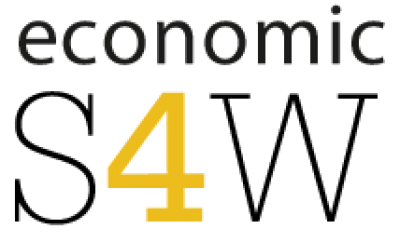The economic security of women in rural, regional and remote Australia – Challenges, Opportunities and Optimism
Discussion Paper
Women in rural, regional and remote (RRR) areas of Australia face many different challenges to their sisters in the big towns and cities. These challenges are limiting the ability of many women to build their economic and financial security and indeed, are feeding into longer run and broader issues relating to financial insecurity.
THE Rural Woman, in partnership with economic Security4Women (eS4W), has researched the issues confronting RRR women with the goal of examining the main issues that are working against building the economic security of women in those areas. In addition, the goal was to develop a series of recommendations on how those problems can be addressed and corrected for the benefit of all women in RRR areas. These recommended reforms will require policy action and changes at the Federal, State and local government levels.
The basis of the findings and the analysis in this report were a virtual round table discussion with women from RRR areas plus a more formal survey which had 192 respondents. To those respondents, thank you for your often candid, private and insightful feedback. We hope we have done justice to all of your concerns and goals.
We note that this paper is not the be all and end all of research and work in this space. It is the next building block that can be discussed, enhanced and implemented in what will be a long road before we can be sure that all women in RRR areas have economic security.
Background issues and findings
As expected, there were a diverse range of views on the issues confronting women in RRR areas of Australia in terms of dealing with and enhancing economic and financial security.
In broad terms, the lived experience revealed in the survey and discussion focussed on independence and self-esteem.
The path to these goals and to the associated benefit of greater financial security are summarised as being:
- additional income,
- confidence,
- skills and education, and
- connections with other like-minded women and men at a professional as well as a personal level.
With fewer opportunities for close personal and professional interaction than for those in the cities, many women in RRR areas were looking to create income around their lifestyle. Many indicated that they enjoyed the life of being on farms or in small towns and making a strong contribution in those communities, but the general feeling was that the opportunities in these areas were narrow and therefore limited.
It need not be that way.
Key recommendations
- Establish a financing facility for women in RRR Australia. The structure of the loan facility would be based on many of the usual commercial terms but underwritten by the government sector. Loans would attract interest and have to be repaid. Given the vast bulk of loans would be to entities with an ABN, the loan process could be administered and monitored through the quarterly Business Activity Statement.
- If the Commonwealth government is to create the program, it can underwrite the loan through its bond borrowing program and structure the scheme so there is no net cost to the budget. We are acutely aware of the issues confronting the government’s budget position at the present time and are mindful of the cost of the recommendations.
- The government could, for example, through the Commonwealth Government bond market, borrow money for a 3-year term at a cost to it of approximately 0.1 per cent per annum. It could, through a financial intermediary, on-lend the money to RRR business women at an interest rate that covers administrative and other costs including an allowance for loans that are ‘bad’ and not repaid. We estimate the loans could be provide to RRR women at an annual rate around 3 per cent.
- While we would need to undertake more work to determine the size of the total loan facility, our preliminary estimate is that $100 million would cover 10,000 loans with an average initial balance of $10,000.
- Procurement policies from governments at all levels and their entities towards women owned business in RRR areas. Direct procurement policies currently exist in a large range of government contracts, particularly in relation to ‘buy Australian’. We are recommending one additional step to this and “buy from businesses owned and run by Australian women in rural, regional and remote areas”. There would be a register of such businesses established which would be a point of call for government procurement managers.
- Aboriginal and Torres Strait Islander women must be a critical part of these broader strategies outlined above. ATSI often have to work from more remote areas with an associated further shortfall in important connections and infrastructure.
- Training and education in areas of finance and business skills was seen as a critical part of broader economic security issues, but also to those seeking finance for their business plans. In relation to this, we recommend the creation of a government body that answers questions on all aspects of finance in a clear and comprehensive way.
